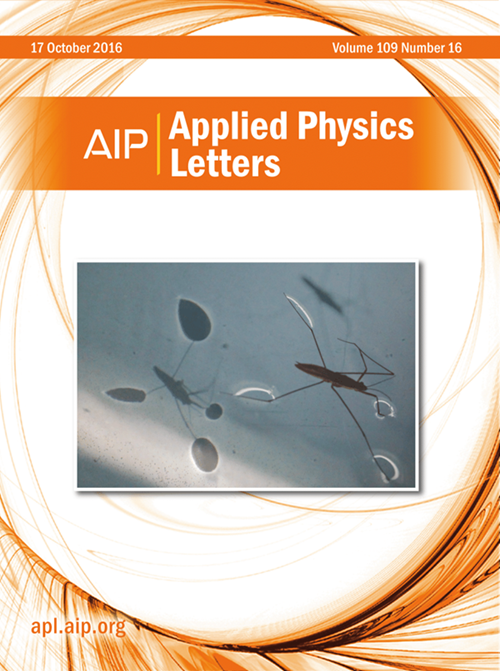Propulsion contribution from individual filament in a flagellar bundle
IF 3.5
2区 物理与天体物理
Q2 PHYSICS, APPLIED
引用次数: 0
Abstract
Flagellated microorganisms overcome the low-Reynolds-number time reversibility by rotating helical flagella [E. M. Purcell, Am. J. Phys. 45, 3–11 (1977); D. Bray, Cell Movements: From Molecules to Motility, 2nd ed. (Garland Publishing, New York, NY, 2001); Lauga and Powers, Rep. Prog. Phys. 72, 096601 (2009); and E. Lauga, Annu. Rev. Fluid Mech. 48, 105–130 (2016)]. For peritrichous bacteria, the randomly distributed flagellar filaments align in the same direction to form a bundle, facilitating complex locomotive strategies [Berg and Brown, Nature 239, 500–504 (1972); Turner et al., J. Bacteriol. 182, 2793–2801 (2000); and Darnton et al., J. Bacteriol. 189, 1756–1764 (2007)]. To understand the process of flagellar bundling, especially propulsion force generation, we develop a multi-functional macroscopic experimental system and employ advanced numerical simulations for verification. Flagellar arrangements and phase differences between helices are investigated, revealing the variation in propulsion contributions from individual helices. Numerically, we build a time-dependent model to match the bundling process and study the influence of hydrodynamic interactions. Surprisingly, it is found that the total propulsion generated by a bundle of two filaments is constant at various phase differences between the helices. However, the difference between the propulsion from each helix is significantly affected by a phase difference, and only one of the helices is responsible for the total propulsion when the phase difference is equal to π. Building on our experimental and computational results, we develop a theoretical model considering the propulsion contribution of each filament to better understand microbial locomotion mechanisms, especially the wobbling behavior of the cell. Our work also sheds light on the design and control of artificial microswimmers.鞭毛束中单个细丝的推进作用
本文章由计算机程序翻译,如有差异,请以英文原文为准。
求助全文
约1分钟内获得全文
求助全文
来源期刊

Applied Physics Letters
物理-物理:应用
CiteScore
6.40
自引率
10.00%
发文量
1821
审稿时长
1.6 months
期刊介绍:
Applied Physics Letters (APL) features concise, up-to-date reports on significant new findings in applied physics. Emphasizing rapid dissemination of key data and new physical insights, APL offers prompt publication of new experimental and theoretical papers reporting applications of physics phenomena to all branches of science, engineering, and modern technology.
In addition to regular articles, the journal also publishes invited Fast Track, Perspectives, and in-depth Editorials which report on cutting-edge areas in applied physics.
APL Perspectives are forward-looking invited letters which highlight recent developments or discoveries. Emphasis is placed on very recent developments, potentially disruptive technologies, open questions and possible solutions. They also include a mini-roadmap detailing where the community should direct efforts in order for the phenomena to be viable for application and the challenges associated with meeting that performance threshold. Perspectives are characterized by personal viewpoints and opinions of recognized experts in the field.
Fast Track articles are invited original research articles that report results that are particularly novel and important or provide a significant advancement in an emerging field. Because of the urgency and scientific importance of the work, the peer review process is accelerated. If, during the review process, it becomes apparent that the paper does not meet the Fast Track criterion, it is returned to a normal track.
 求助内容:
求助内容: 应助结果提醒方式:
应助结果提醒方式:


